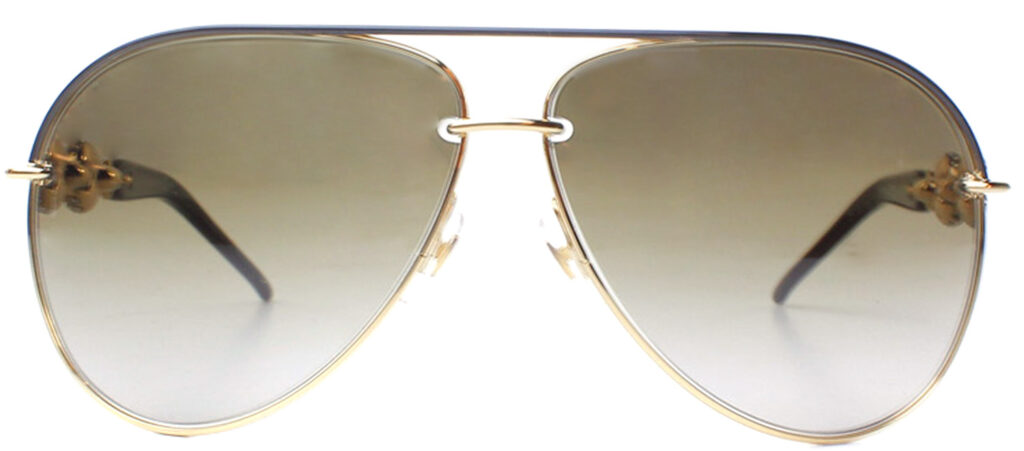
No look is too casual or too formal for Gucci GG 4230 6DE , take advantage of this slee… [More]
As spring draws near, people will be replacing their hats and gloves with sunglasses. While status conscious fashionistas might spend hundreds to get the latest look from Tom Ford, Gucci or Prada, others spend more money on expensive glasses simply because they are worried that cheaper shades might not give them adequate sun protection. We asked Dr. Mirwat Sami a Houston Board-certified Ophthalmologist specializing in Ophthalmic Plastic and Reconstructive Surgery to shed some light on what to look for when selecting a pair.
Dr. Sami explains that, “Excessive exposure to UV light from sand or pavement reflections can burn the eye’s surface. Think of it like sunburn on the skin, and as the damage accumulates over the years, you can do some real harm to your eyesight without even knowing or feeling it. The American Academy of Ophthalmology recommends quality sunglasses as a preventative, provided they screen out 99% to 100% of UV light.” The questions is, are designer sunglasses superior at when it comes to providing eye protection?
1) Look for a UVA-UVB protection rating. Imagine going out on a bright day without any sunscreen, then staying out for hours. Sounds foolish, right? Well, that’s exactly what you’ll do to your eyes if you overlook UVA and UVB protection in your sunglasses. Dr. Sami says to, “Look for a tag or label that says your lenses block 99 to 100% of UVA and UVB radiation. The label should read either “UV 400” or “100% UV protection.” Don’t be fooled if the glasses merely say “UV protective.” That’s not sufficient, and in fact, may mean they’re no good at all.”

Tom Ford Jennifer TF8 602 Sunglasses
Take on the American style with Brown Gold Hardware Sunglasses and Brown Gradient Lens … [More]
3) Are the lenses tapered? Many cheap shades have inferior optical quality. Dr. Sami says that, ” Good lenses require careful manufacturing control that includes “decentering,” or tapering the lenses. Inexpensive plastic lenses will strain your eyes. You might not notice it at first, but after a while, subtle fatigue or even severe eyestrain and headaches will set in.”
4) Designer lenses may not be designed for optimum value. Looking for proper eye protection, it’s easy to go too far in the other direction and dish out $300 or more for overpriced shades. Dr. Sami cautions, “Approach fancy designer brands with caution, especially if the company is better known for handbags than eyewear. You’re probably paying more for the name and the logo than for the quality of the lens and glasses.”

Prada PR 28NS 2AU6S1 Butterfly Minimal-Bar…
An iconic Prada Matte/Gloss Tortoise Plastic Sunglasses with Brown Gradient Lens that … [More]
5)The tint of the lens has nothing to do with the UV protection of the glasses. A clear lens with no tint and 100% UV protection is better for your eyes than dark, heavily tinted sunglasses without UV protection.Dr. Sami says that, “Dark lenses without adequate UV protection are actually worse for your eyes than not wearing glasses at all, because the dark tint causes your pupils to become dilated, thus exposing your eyes to more harmful UV light”.

Tom Ford tf153 Bachardy 50F sunglasses.
Take on the American style with borwn plastic hipster Sunglasses and browns by wearing … [More]
6) Choose the right style. Ideally, your sunglasses should cover the sides of your eyes to prevent stray light from entering. Wraparound lenses are best, but if that’s not an appealing style, look for close-fitting glasses with wide lenses. Avoid models with small lenses, such as John Lennon -style sunglasses.
7) Avoid Sidewalk vendors. The tinted lenses will relax your pupils, letting more damaging radiation hit your retina than if you were wearing no glasses at all. Buy sunglasses from a well established vendor. Even a chain drugstore is fine.
8)Test old sunglasses. If you already have a favorite pair but don’t know what kind of protection they offer, ask your local eyewear store if they have a UV meter. This device can measure the UV protection of your glasses and help you determine whether you should buy a new pair. Dr. Sami says that, “Most opticians have such a meter and can do this very easily,”
9) Even if you wear contact lenses that offer UV protection, you’re not in the clear. Dr. Sami points out that, “Contact lenses sit on the cornea in the center of your eyes and so can’t protect the surrounding white area (the conjunctiva) and skin”
While some may not want to part with their designer glasses, for those who are budget conscious, it all comes down to how they are made, not the label. Dr. Sami quotes the chair of ophthalmology at Tufts University as saying that. “For about $40 you can get a pair that offers 100% protection against ultra-violet rays. If you spend maybe $70 you should be able to get a pair with decent quality polarizing lenses that cut out glare. Beyond that, the medical benefits tail off pretty fast.”
Lastly consider this: At 4% interest, $200 a year for sunglasses over 50 years adds up to $30,000.

